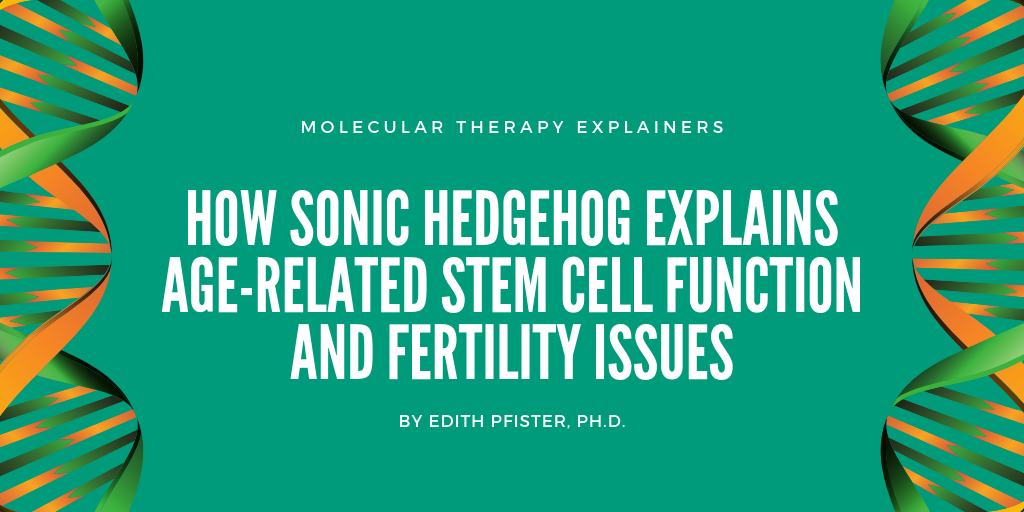How Sonic Hedgehog Explains Age-Related Stem Cell Function and Fertility Issues
Edith Pfister, Ph.D. - July 23, 2019
In reviewing a recent Molecular Therapy article, Edith Pfister, Ph.D., associate editor of ASGCT's newsletter The Vector, outlines the possible effects of stem cell function on age-related fertility issues.

As I was browsing the pages of Molecular Therapy this month for new papers, my eyes stopped on an article titled, “An Endogenous Anti-aging Factor, Sonic Hedgehog, Suppresses Endometrial Stem Cell Aging through SERPINB2” by Cho et al. Like many of my college classmates, I started my family later. I was 34 when I had my first child, sneaking in just under the threshold of what is considered, “advanced maternal age.” I was 37 when I had my second. Fortunately, I never (as far as I know) suffered a pregnancy loss, but a number of my peers were not so lucky. Miscarriage is one of the most common complications of pregnancy occurring in 10-15% of known pregnancies. The risk of miscarriage increases with age, and while we did not often discuss the subject directly, discussions of how old we were and when we were planning on having children were common for a time.
The endometrium has amazing regenerative capacity, undergoing monthly cycles of growth and differentiation throughout the reproductive years. This ability to regenerate and repair month after month relies on endometrial stem cells. With age, stem cells, including those residing in the endometrium, lose their ability to renew and differentiate and senesce, which leads to a decrease in regenerative capacity and fertility issues. What, Cho et al. asked, underlies the decline in stem cell function?
Sonic hedgehog (SHH) is a ligand of the hedgehog signaling pathway well known for its role in development. High levels of hedgehog signaling occur in other regenerating tissues, such as hair, skin, teeth, blood and muscle. In the brain, SHH regulates stem cell proliferation (Palma et al, 2005) and protects against oxidative stress (Dai et al, 2011). Cho et al. hypothesized that decreased expression of SHH underlies the loss of regenerative capacity of endometrial stem cells and may contribute to decreased pregnancy and increased miscarriage with age. The authors found that treatment of endometrial cells in vitro with exogenous SHH decreased markers of senescence in response to both serial passaging and oxidative stress. When they compared tissues from 5 week old and 72 week old mice, they found a significant decrease in both SHH mRNA and protein in multiple organs, including the brain, uterus, liver, and kidneys. The authors hypothesized that another gene, SERPINB2, mediates the effect of SHH on endometrial stem cell senescence. To support this hypothesis, they show that SERPINB2 expression increases with age in mice, and in response to replicative and oxidative stress in endometrial stem cells. Exogenous SHH mutes this effect and silencing of SERPINB2, like expression of SHH, reduces markers of senescence and inflammation in response to stress. They suggest a model where age related decreases in SHH signaling result in increased SERPINB2 and reduced regenerative capacity in endometrial stem cells.
So is modulation of SHH a potential treatment for age related declines in fertility? Probably not. Impairment of SHH signaling is associated with diseases of aging, but upregulation of signaling is seen in many cancers. Hedgehog signaling may be the proverbial double-edged sword, but this study provides some interesting clues as to how aging and environmental factors may interact to decrease fertility and increase the risk of miscarriage.
Related Articles